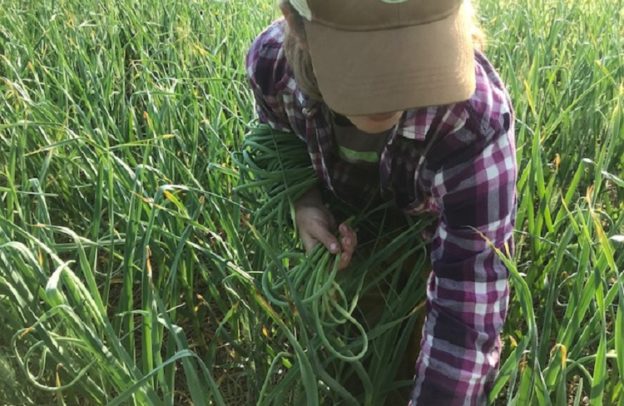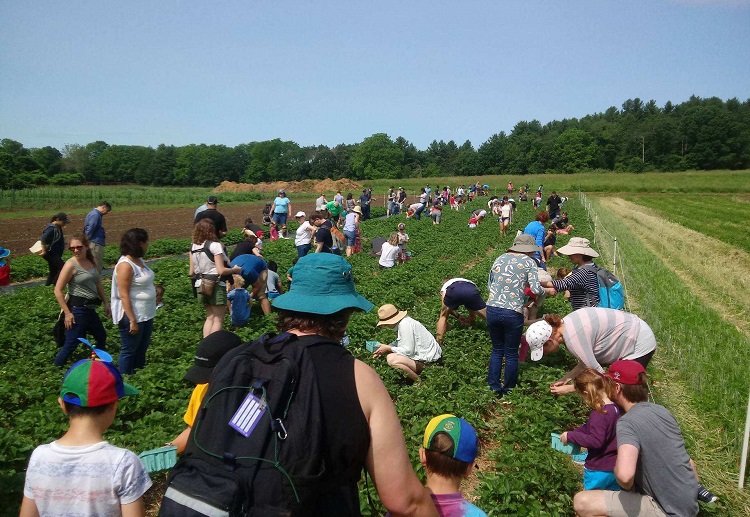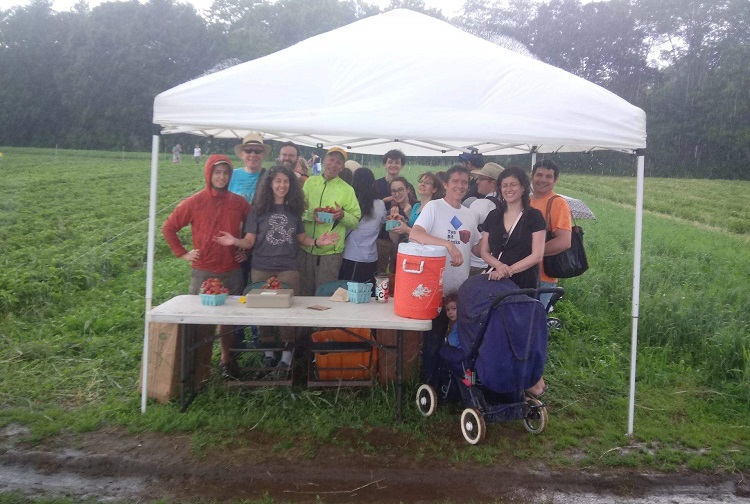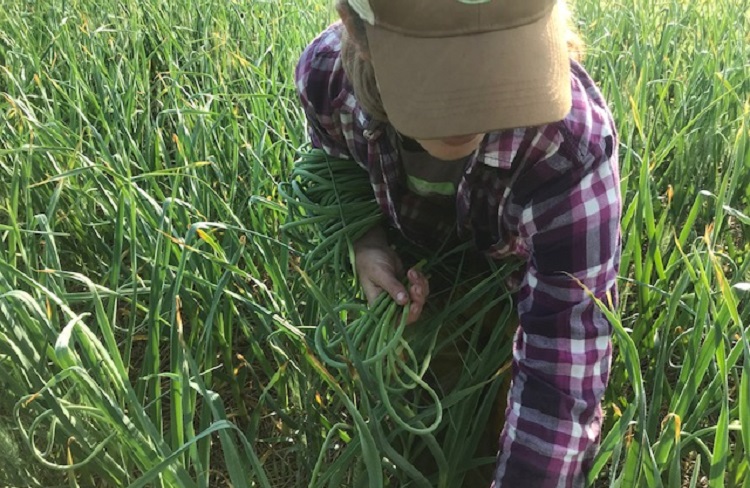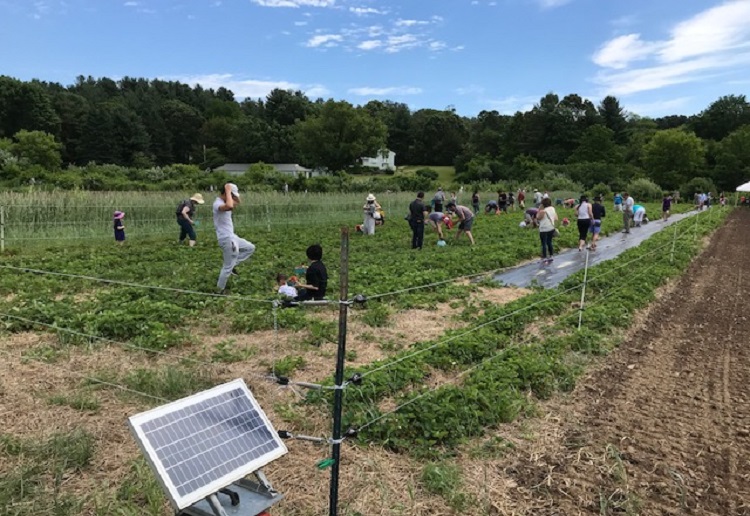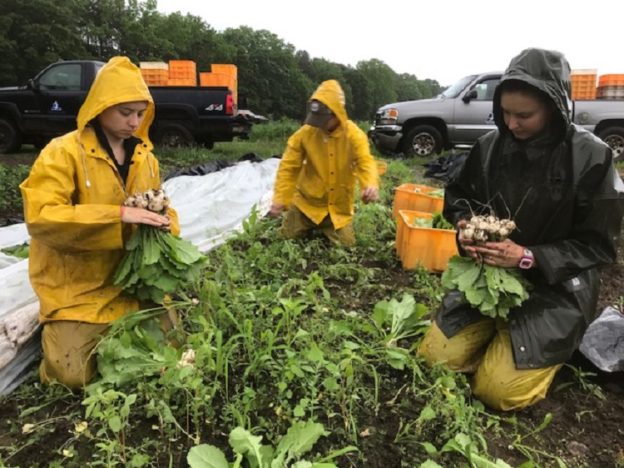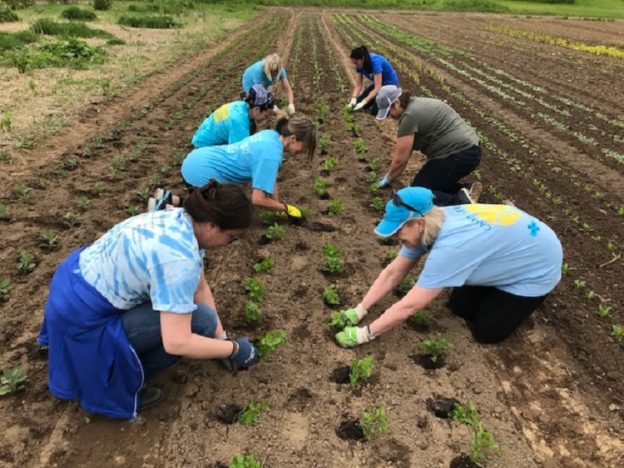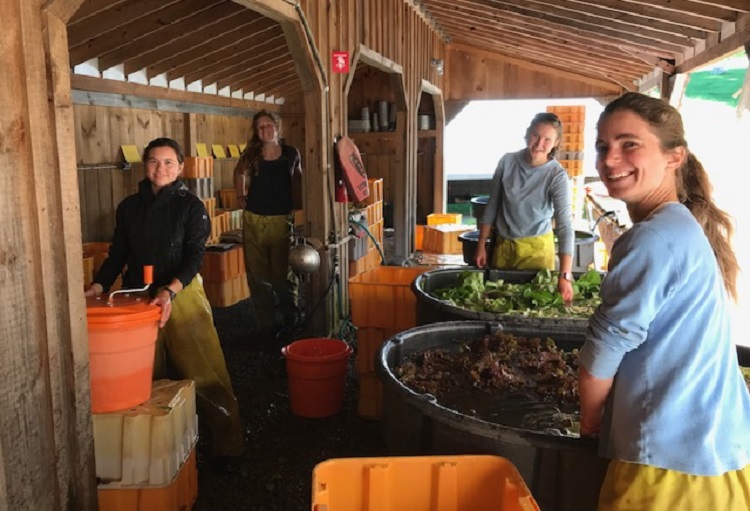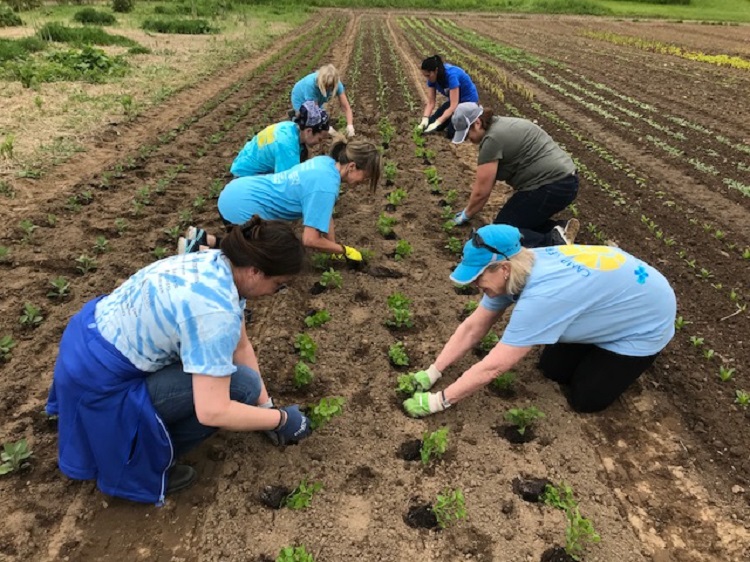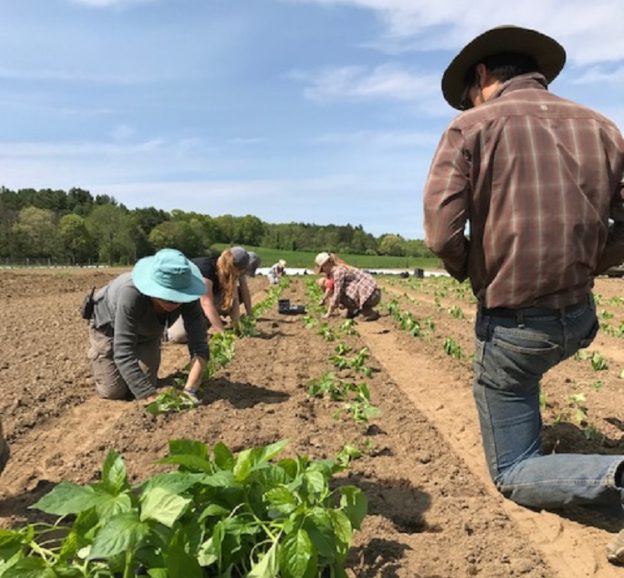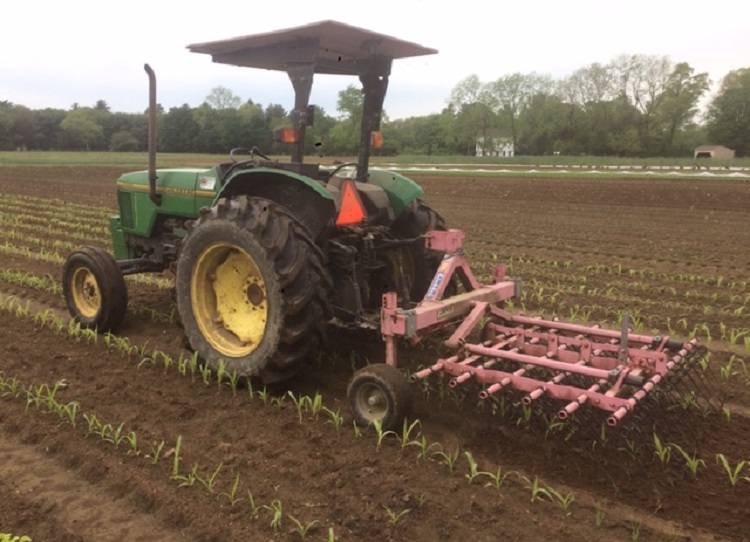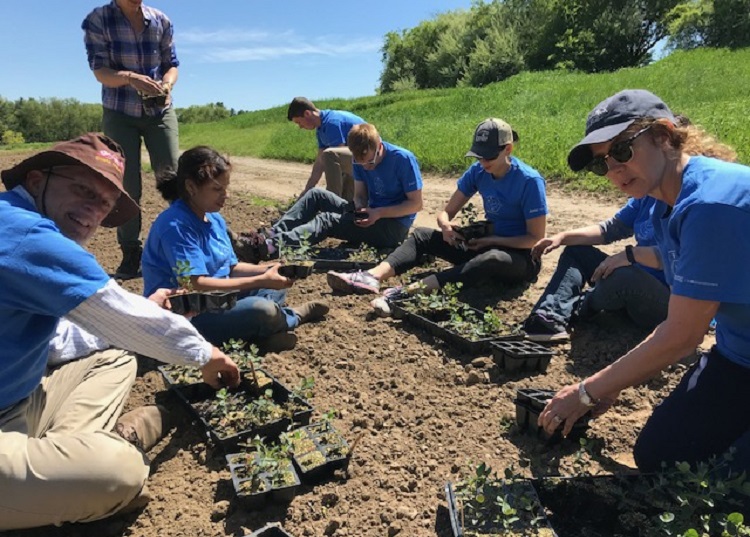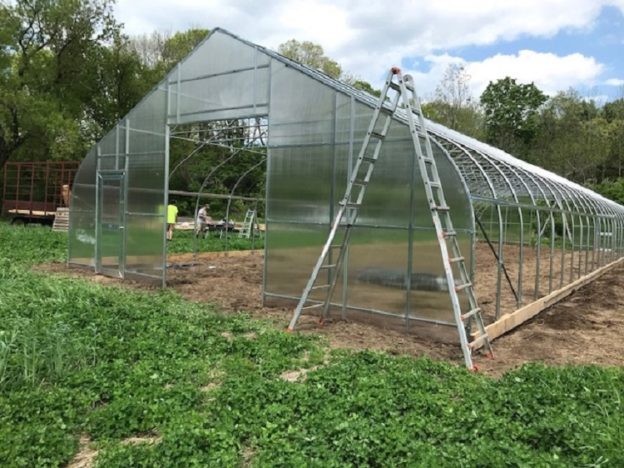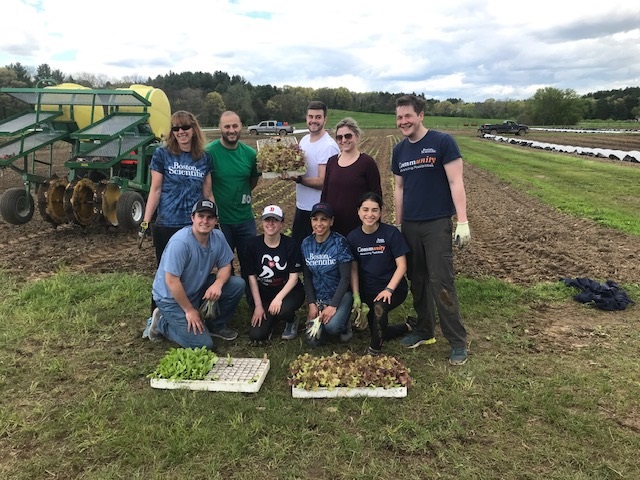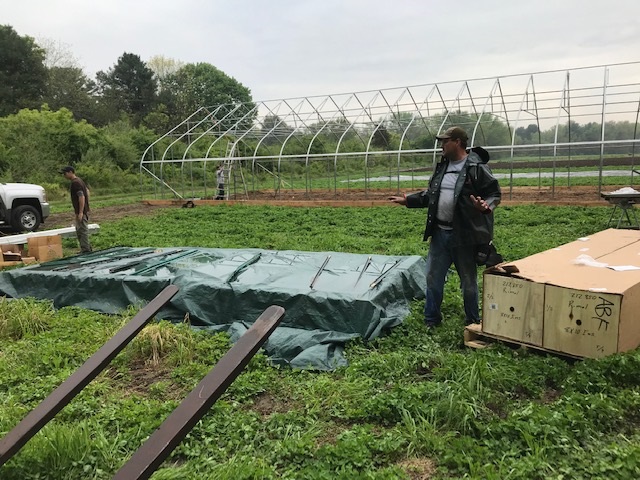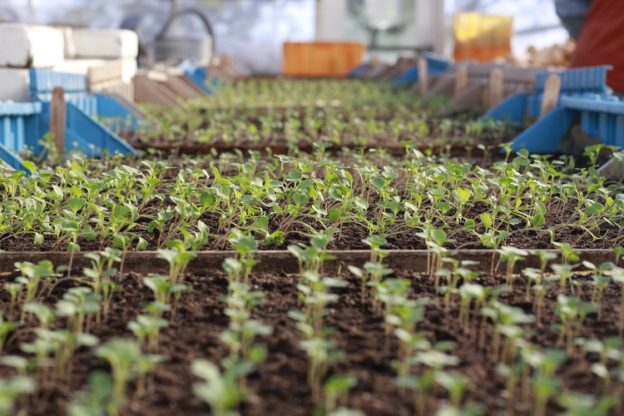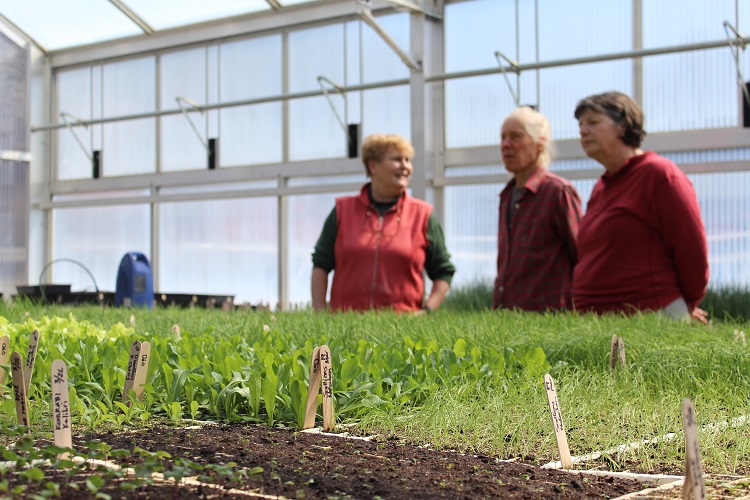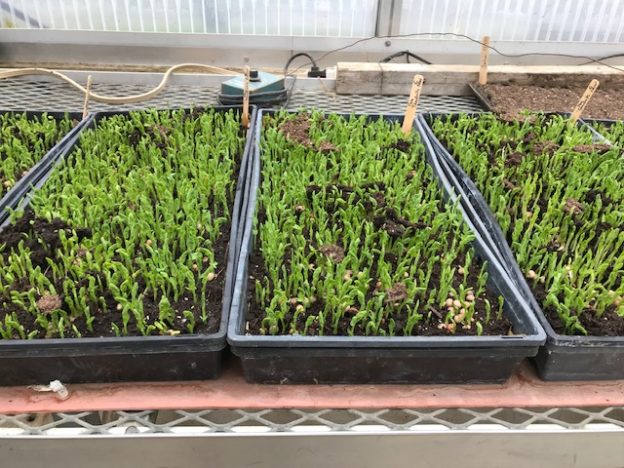The season for strawberries, garlic scapes and peas is winding down, but we’re beginning to harvest summer squash, cucumbers, cabbage, and broccoli. We got a downpour on Saturday morning, but Sunday’s severe storms passed us by, and we were grateful not to experience the damage to leafy crops hail storms can cause. The few showers we did get helped water-in the fennel and summer and winter squash we planted with Saturday’s drop-in volunteers. We’ve now finished planting all the gourds, pumpkins, and winter squash—which takes about three acres to accommodate those crops! Now we just need to control weeds, fertilize before the vines run across the beds, and close off access to those fields until harvest.
It has been difficult to find a source for straw this season because all the rain has made it tricky for farmers in the Northeast to cut and bale grains. I believe last fall’s wet weather also affected the supply going into the winter, which doesn’t help. We were wondering if we would need to leave our tomato patch un-mulched and just commit to fighting the weeds all season long. We held-off stringing the first succession of tomatoes hoping that some straw would turn up before it would become difficult to add post-stringing. At the last moment, Colby Farm in Newbury, MA came through for us and delivered bales on Thursday, just as a group of volunteers from National Grid returned to the farm for the third year in a row. They jumped right in, spread the straw in the entire patch (pictured below), and then stayed late to help us plant some brassicas.

On Wednesday, volunteers with Google Chrome weeded strawberries, and then did an awesome job planting our entire second round of tomatoes (pictured below). On Friday, a large group of MathWorks volunteers planted over 1,500 cauliflower transplants and then picked peas for the next day’s market. All three corporations that sent volunteers this week have done so in the past, and some of the individuals were returning for the second and even the third time. We can happily say they like coming here and connecting with nature and Mass Audubon through shared farm work! Thanks all for making it a successful week.

See you in the field,
Your Farmers



